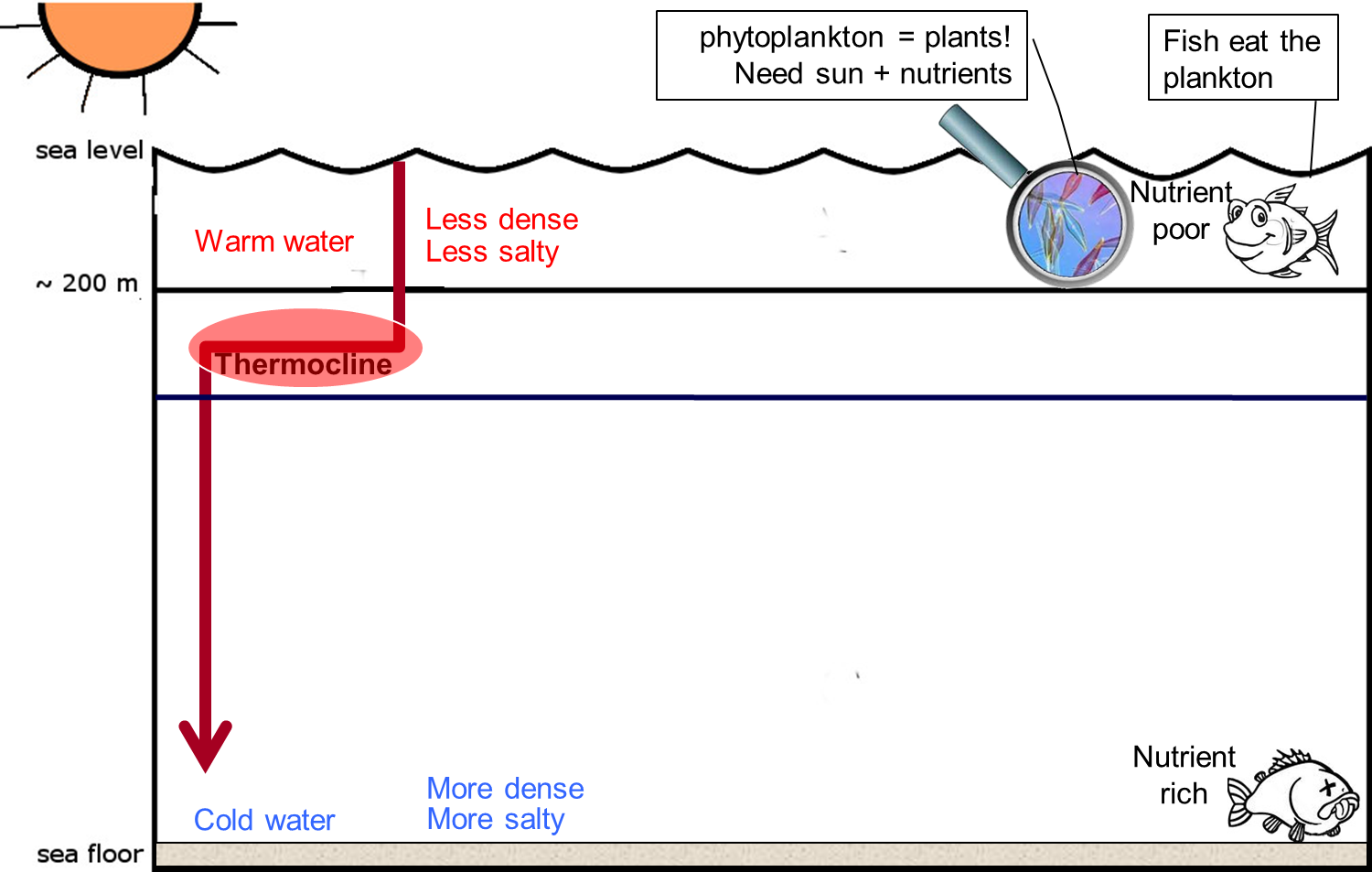Properties of Seawater: Density
Temperature & Density
Dissolved solids such as salts and nutrients add weight to water (density). Thus, increased salinity = increased density. Very cold & salty water creates dense more dense water that sinks and flows; warm & less salty water creates less dense water. The zone of rapid density change iis called the pycnocline.
The ocean is divided into three primary zones:
- The surface zone - the upper layer of the ocean; water here is warm, less salty and less dense
- The mixed (or pycnocline) zone - a zone in which density and salinity increases and temperature decreases with depth
- The deep zone – cold, dense, salty water that comprises about 80% of all ocean water.

Note that there is no surface or transition zone in the higher latitudes. This is because there is not much difference in the temperature, salinity and density of the waters at the surface verses the deeper waters, so the thermocline, halocline and pycnocline are absent in the polar regions. Also note how the transition zone shallows at the equator. This is due to a more or less permanent upwelling condition that exists there, about which you will learn more about when we cover ocean currents.
Thus, the surface waters are warm, less salty, less dense and nutrient poor; deeper waters are cold, more salty, more dense, and nutrient rich.
